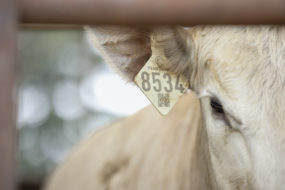Of course, when markets are as heated as has been seen for the past few weeks one unintended consequence can often be increased price volatility, since it is not uncommon for higher price levels to bring about increased absolute price risk. For a bit of perspective in this regard consider that in the months prior to the initial case of BSE in the U.S. live cattle prices were moving higher and market volatility moved higher as well (this was followed by sharp declines after the case was discovered but high price volatility remained intact).
Then, in 2007 and 2008 as prices for most agricultural commodities increased their price swings were larger too. Finally, the 2012 drought driven corn market pushed prices and price volatility much higher.
More specifically, from the January 1995 contract to the September 2003 contract, for all individual contract months, the feeder cattle futures contract averaged a price swing of $0.26 per hundredweight (cwt) on the lowest end to $0.54 per cwt on the high side. This measure considers all daily price moves for the 150 days leading up to contract expiration (but not including the final 15 days).
Since then, the average of daily price move across all individual contracts has dipped under the $0.54 per cwt mark only three times (January, March, and April 2010 contract months) and has ranged from a high of $1.02 to a low of $0.50.
Similarly, the average daily price movement of individual live cattle futures contracts ranged from a low of $0.24 per cwt to a high of $0.50 per cwt from February 1995 to August 2003.
Since then, contract price movement has dipped below the $0.50 per cwt mark more often than feeder futures but never less than $0.40 and this has occurred recently (the December 2013 contract). So there is the catch. In spite of record prices, which typically brings about increased price volatility. Markets, using the futures market as the indicator of price level and price volatility, have been calmer despite the record level of prices. The nearby February 2014 live cattle futures contract just hit a contract high (even when adjusted for inflation); however, its price swings are currently averaging a mere $0.38 per cwt over the previous 150 days.
So it appears that, for the time being, markets are taking these record prices in stride. Still, as a risk-averse economist, throwing caution to the wind would be ill advised. ![]()
– John Michael Riley is a extension economist at Mississippi State University. This originally appeared in the Livestock Marketing Information Center newsletter.






